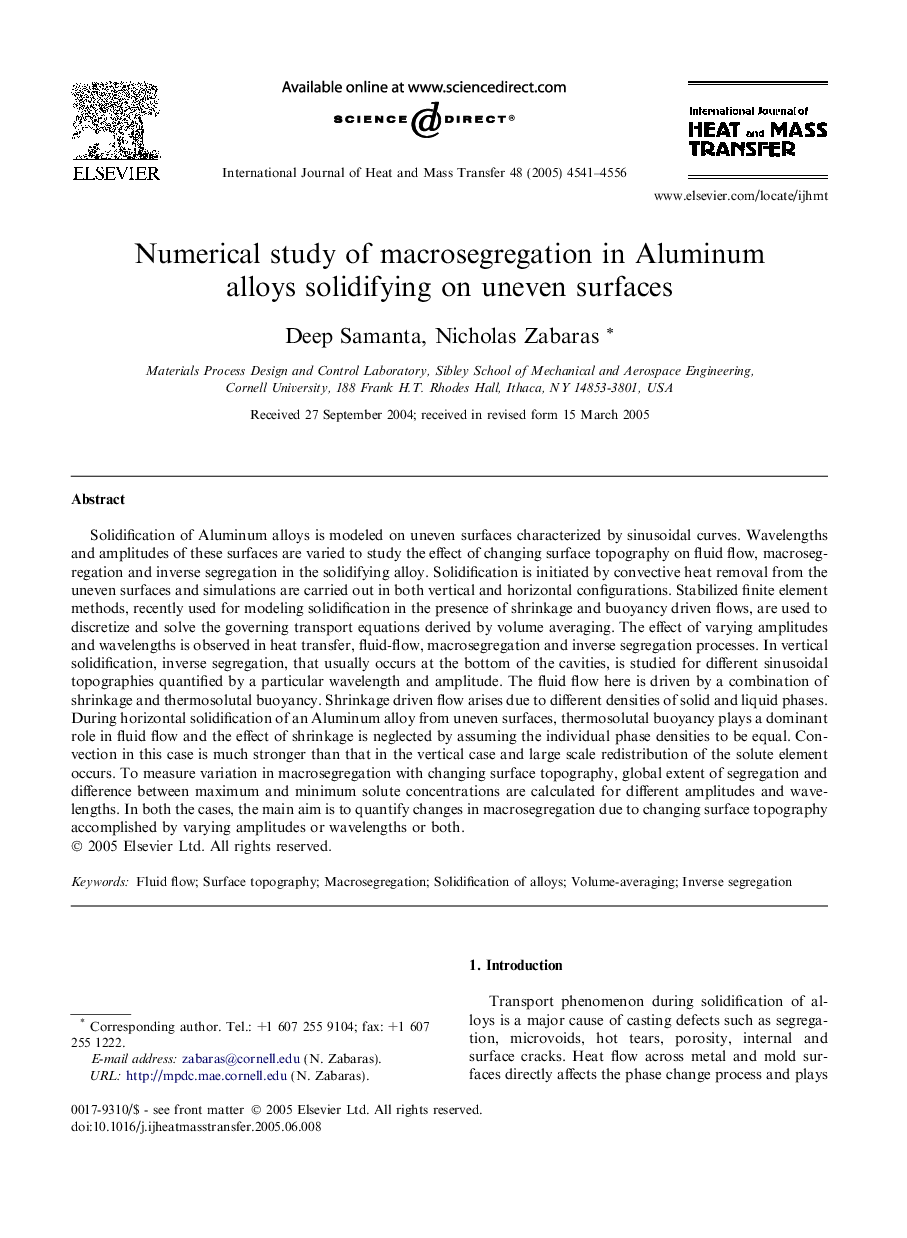| کد مقاله | کد نشریه | سال انتشار | مقاله انگلیسی | نسخه تمام متن |
|---|---|---|---|---|
| 662781 | 1458181 | 2005 | 16 صفحه PDF | دانلود رایگان |

Solidification of Aluminum alloys is modeled on uneven surfaces characterized by sinusoidal curves. Wavelengths and amplitudes of these surfaces are varied to study the effect of changing surface topography on fluid flow, macrosegregation and inverse segregation in the solidifying alloy. Solidification is initiated by convective heat removal from the uneven surfaces and simulations are carried out in both vertical and horizontal configurations. Stabilized finite element methods, recently used for modeling solidification in the presence of shrinkage and buoyancy driven flows, are used to discretize and solve the governing transport equations derived by volume averaging. The effect of varying amplitudes and wavelengths is observed in heat transfer, fluid-flow, macrosegregation and inverse segregation processes. In vertical solidification, inverse segregation, that usually occurs at the bottom of the cavities, is studied for different sinusoidal topographies quantified by a particular wavelength and amplitude. The fluid flow here is driven by a combination of shrinkage and thermosolutal buoyancy. Shrinkage driven flow arises due to different densities of solid and liquid phases. During horizontal solidification of an Aluminum alloy from uneven surfaces, thermosolutal buoyancy plays a dominant role in fluid flow and the effect of shrinkage is neglected by assuming the individual phase densities to be equal. Convection in this case is much stronger than that in the vertical case and large scale redistribution of the solute element occurs. To measure variation in macrosegregation with changing surface topography, global extent of segregation and difference between maximum and minimum solute concentrations are calculated for different amplitudes and wavelengths. In both the cases, the main aim is to quantify changes in macrosegregation due to changing surface topography accomplished by varying amplitudes or wavelengths or both.
Journal: International Journal of Heat and Mass Transfer - Volume 48, Issues 21–22, October 2005, Pages 4541–4556